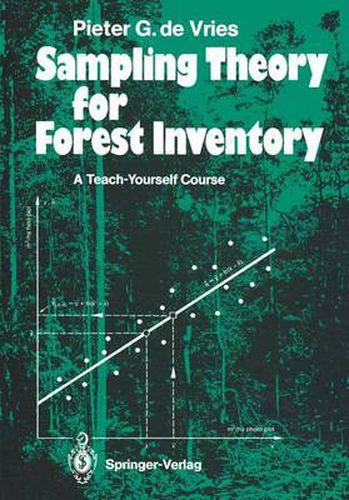Readings Newsletter
Become a Readings Member to make your shopping experience even easier.
Sign in or sign up for free!
You’re not far away from qualifying for FREE standard shipping within Australia
You’ve qualified for FREE standard shipping within Australia
The cart is loading…






This title is printed to order. This book may have been self-published. If so, we cannot guarantee the quality of the content. In the main most books will have gone through the editing process however some may not. We therefore suggest that you be aware of this before ordering this book. If in doubt check either the author or publisher’s details as we are unable to accept any returns unless they are faulty. Please contact us if you have any questions.
Forest inventory may be defined as the technique of collecting, evaluating and presenting specified information on forest areas. Because of the generally la~ge extent of forest areas, data are usually collected by sampling, i.e. by making observations on only part of the area of interest. As there are many different sampling methods (e.g. Appendix 1), a choice must first be made as to which method suits the given field and financial circumstances best. On completion of the sampling procedure, the numerous data collected have next to be condensed to manageable representative quantities. Finally, from these quantities, inferences about the situation in the entire forest area are made, preferably accompanied by an indication of their reliability. This book is intended for students who want to know the whepefope of the sampling techniques used in forest inventory. The danger of lack of knowledge is a blind following of instructions and copying statistical formulae, or, even worse, feeding data into a computer loaded with a program that is said to print out the required information. In serious persons, such approaches may leave a feeling of dissatisfaction or even of professional incompetence, be cause of inability to direct or evaluate the procedure critically. If a student tries to improve his or her situation, he/she will find that the few existing forest inventory textbooks, though some with merit, either use confusing statistical symbols or do not adequately cover theoretical principles.
$9.00 standard shipping within Australia
FREE standard shipping within Australia for orders over $100.00
Express & International shipping calculated at checkout
This title is printed to order. This book may have been self-published. If so, we cannot guarantee the quality of the content. In the main most books will have gone through the editing process however some may not. We therefore suggest that you be aware of this before ordering this book. If in doubt check either the author or publisher’s details as we are unable to accept any returns unless they are faulty. Please contact us if you have any questions.
Forest inventory may be defined as the technique of collecting, evaluating and presenting specified information on forest areas. Because of the generally la~ge extent of forest areas, data are usually collected by sampling, i.e. by making observations on only part of the area of interest. As there are many different sampling methods (e.g. Appendix 1), a choice must first be made as to which method suits the given field and financial circumstances best. On completion of the sampling procedure, the numerous data collected have next to be condensed to manageable representative quantities. Finally, from these quantities, inferences about the situation in the entire forest area are made, preferably accompanied by an indication of their reliability. This book is intended for students who want to know the whepefope of the sampling techniques used in forest inventory. The danger of lack of knowledge is a blind following of instructions and copying statistical formulae, or, even worse, feeding data into a computer loaded with a program that is said to print out the required information. In serious persons, such approaches may leave a feeling of dissatisfaction or even of professional incompetence, be cause of inability to direct or evaluate the procedure critically. If a student tries to improve his or her situation, he/she will find that the few existing forest inventory textbooks, though some with merit, either use confusing statistical symbols or do not adequately cover theoretical principles.